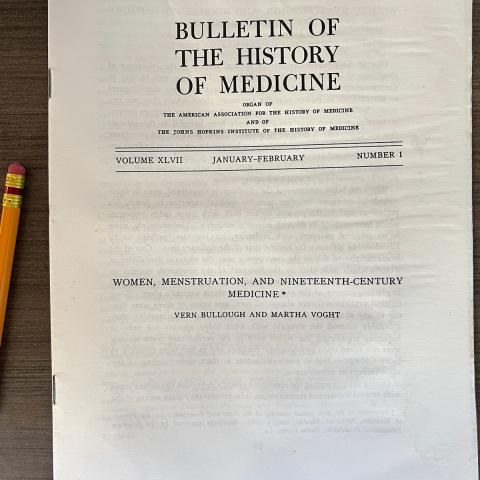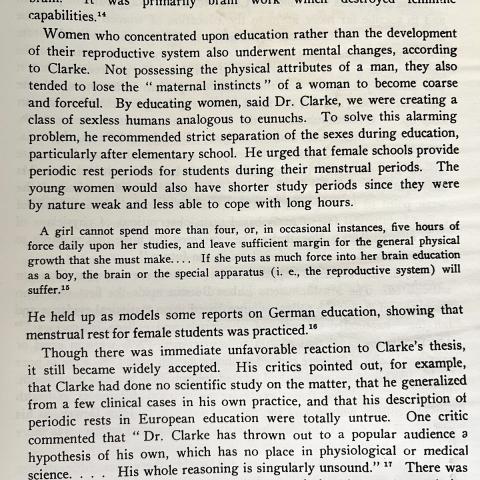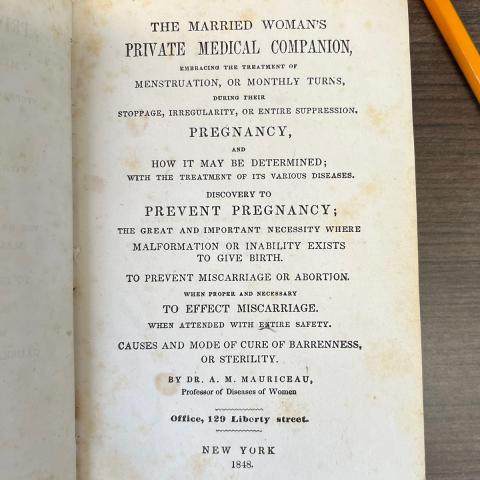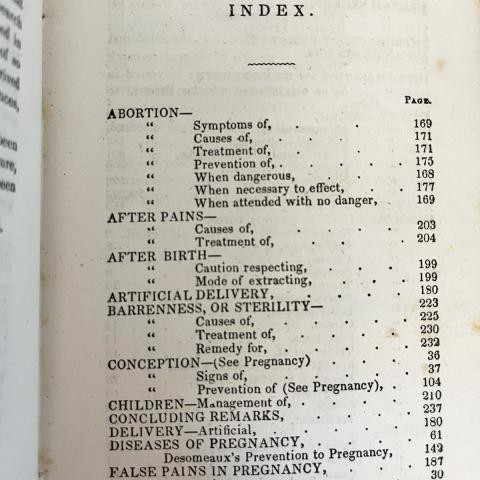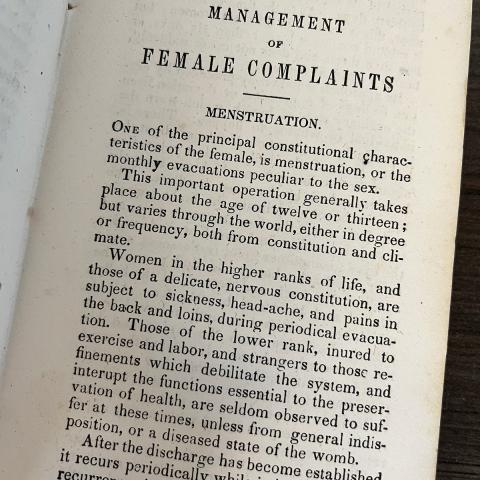Menstruation: Misinformation, Fear, and Folklore
by Julieta Garcia, Archivist, International Guitar Research Archive - September 17, 2024
In 2021 the state of California passed Assembly Bill 367 requiring schools, including the California State University system, to stock restrooms with free menstrual products. There has been an increased focus on menstruation in politics recently including efforts to make menstrual products more accessible. Although this is a step in the right direction when discussing equity for those who menstruate, it has not been an easy topic of discussion throughout history—there have been challenges, push back, and misinformation about menstruation. Special Collections & Archives houses materials that delve into the history, misinformation, and folklore surrounding menstruation.
 The Vern L. Bullough Papers contain a paper titled “Women, Menstruation & 19th Century Medicine” co-written by Vern L. Bullough and Martha Voght in the Bulletin of the History of Medicine. In the article, Bullough and Voght discuss views on menstruation in the 19th century. One topic of discussion was the medical profession’s view of women who were interested in entering the medical field, specifically those seeking to become doctors. They discuss how male doctors in the 19th century discouraged women from entering the field because when they would menstruate they needed to focus on this physically demanding and important aspect of their lives instead of focusing on studying to become doctors. Doctors would claim that women could not handle these two demanding instances simultaneously. The paper also states that some doctors would take it a step further and exaggerate the point that women should not be educated while menstruating, causing more harm to women in education.
The Vern L. Bullough Papers contain a paper titled “Women, Menstruation & 19th Century Medicine” co-written by Vern L. Bullough and Martha Voght in the Bulletin of the History of Medicine. In the article, Bullough and Voght discuss views on menstruation in the 19th century. One topic of discussion was the medical profession’s view of women who were interested in entering the medical field, specifically those seeking to become doctors. They discuss how male doctors in the 19th century discouraged women from entering the field because when they would menstruate they needed to focus on this physically demanding and important aspect of their lives instead of focusing on studying to become doctors. Doctors would claim that women could not handle these two demanding instances simultaneously. The paper also states that some doctors would take it a step further and exaggerate the point that women should not be educated while menstruating, causing more harm to women in education.
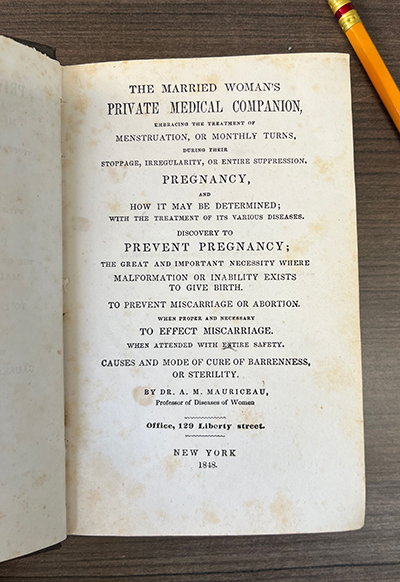 The Married Woman’s Private Medical Companion, from 1848, touches on topics including menstruation, pregnancy, abortion, and miscarriage. In the beginning of the book it focuses on “Management of Female Complaints” and its “treatments.” Menstruation being the first topic, it supports some of what Bullough and Voght’s paper discussed in regard to belief systems in the 19th century. One treatment that stood out was to include outdoor activity when having an array of symptoms such as heaviness, pains in the back, and others which could develop into becoming pale, having swollen feet, and experiencing symptoms of hysteria. Considering the authoritative voice of medical professionals in the patient-doctor relationship, one easily sees how this might have imposed fear of menstruation onto married women.
The Married Woman’s Private Medical Companion, from 1848, touches on topics including menstruation, pregnancy, abortion, and miscarriage. In the beginning of the book it focuses on “Management of Female Complaints” and its “treatments.” Menstruation being the first topic, it supports some of what Bullough and Voght’s paper discussed in regard to belief systems in the 19th century. One treatment that stood out was to include outdoor activity when having an array of symptoms such as heaviness, pains in the back, and others which could develop into becoming pale, having swollen feet, and experiencing symptoms of hysteria. Considering the authoritative voice of medical professionals in the patient-doctor relationship, one easily sees how this might have imposed fear of menstruation onto married women.
The Bess Lomax Hawes Student Folklore Collection is a collection of students’ work researching folkloric data on various themes collected for classes at San Fernando State College, now CSUN. One student from a Spring 1964 class did research on “The Folklore of Menstruation.” The research allowed the student to find terminology, jokes, remedies, and other notes about menstruation of the time. While Bullough and Voght’s paper discusses menstruation from the 19th century medical perspective, this folklore research is interesting because it’s focuses on lore in the public eye in the 1960s, where there continued to be fear and misinformation surrounding menstruation, as there was in the 19th century when The Married Woman’s Private Medical Companion was published.
In 2024, we continue to have conversations about menstruation and what remedies might best assist people who menstruate. Luckily, we have better medicine to alleviate symptoms than the "outdoor activity" suggested 1848. And while medical research attempts to catch up to the female body, there continues to be folklore and home remedies within individual communities about how to best manage individual menstrual cycles.
Image Gallery
Post tagged as: urban archives, special collections, rare books, archives, united states
Read more Peek in the Stacks blog entries